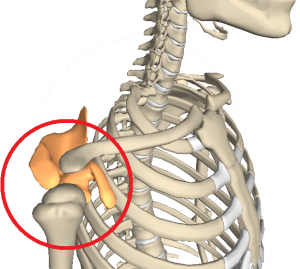Overview

Glenohumeral (GH) osteoarthritis is relatively common in the elderly population, causing pain and reduced mobility. The replacement of the diseased joint with a prosthetic one, an operation called total shoulder arthroplasty (TSA), is a common and efficient treatment. Nevertheless, the failure rate is higher for TSA than it is in total hip arthroplasty. The main causes of TSA failures being glenoid loosening, often associated with off-center loading, as well as joint instability.
Simulated Overcorrected Glenoid Implant
Contact person: Matteo Mancuso
People involved: Matteo Mancuso
Partners: CHUV – OTR, CHUV – RAD, EPFL – LBO
Funding source:
 The main goal of this project is to develop and validate a robotic platform to simulate the implanted shoulder biomechanics, in particular its stability, at a patient-specific level.
The main goal of this project is to develop and validate a robotic platform to simulate the implanted shoulder biomechanics, in particular its stability, at a patient-specific level.
This project is part of a larger-scale collaboration joining four research partners toward the aim of providing better and more reliable treatment for total shoulder arthroplasty (TSA) patients.
In particular, this project will test the implications of an over-correction of the glenoid surface orientation through a modified glenoid implant on the joint stability and wear.